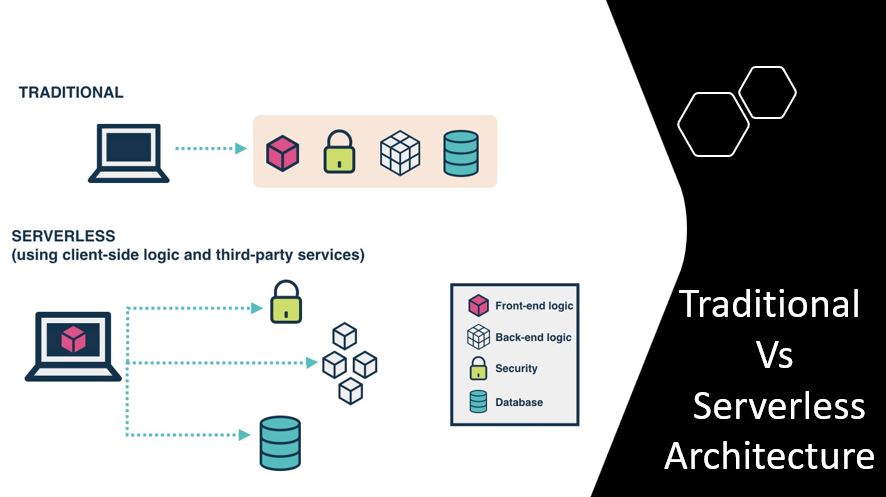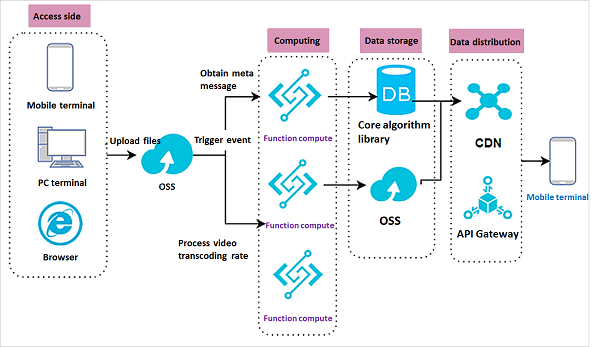
- #WHAT IS SERVERLESS ARCHITECTURE UPDATE#
- #WHAT IS SERVERLESS ARCHITECTURE SOFTWARE#
- #WHAT IS SERVERLESS ARCHITECTURE CODE#
There has been a significant increase in serverless adoption in recent years, with nearly 40 percent of companies worldwide using it in some form. Read now Benefits and Challenges of Serverless Architecture Serverless functions, on the other hand, are better suited for trigger-based events such as payment processing. Additionally, serverless apps scale automatically, while scaling container architectures requires the use of an orchestration platform like Kubernetes.Ĭontainers give developers control over the underlying operating system and runtime environment, making them suitable for applications that consistently get high traffic or as a first step in a cloud migration. In contrast, server maintenance in serverless architectures is handled entirely by the cloud provider.
#WHAT IS SERVERLESS ARCHITECTURE UPDATE#
For example, developers who are using container architecture have to update and maintain each container they deploy, as well as its system settings and dependencies.
#WHAT IS SERVERLESS ARCHITECTURE CODE#
Container Architectureīoth serverless and container architectures allow developers to deploy application code by abstracting away the host environment, but there are key differences between them. Keep in mind that each cloud provider may use different terminology and set unique limits on serverless functions, but the list above defines the basic concepts. Most providers set a default timeout and a maximum timeout. The amount of time that a cloud provider allows a function to run before terminating it.

A function will be throttled if it exceeds this limit. The number of function instances that can run simultaneously in one region, as determined by the cloud provider. The latency that occurs when a function is triggered for the first time or after a period of inactivity. The time it takes for a serverless function to execute. It can therefore be helpful to familiarize yourself with these fundamental serverless terms: Fundamental Concepts in Serverless ArchitectureĪlthough serverless architecture eliminates the need for server management, there’s still a steep learning curve, especially if you’re chaining multiple functions together to create complex workflows in an application. Currently, a majority of developers still use AWS Lambda to build serverless applications, but Google and Microsoft have their own FaaS offerings as well, called Google Cloud Functions (GCF) and Azure Functions respectively.

While serverless architecture has been around for more than a decade, Amazon introduced the first mainstream FaaS platform, AWS Lambda, in 2014. This execution process is abstracted away from the view of developers, who focus on writing and deploying the application code.įunction as a Service (FaaS), a popular type of serverless architecture, allows developers to focus on writing application code.

When a function is invoked, the cloud provider either executes the function on a running server, or, if there is no server currently running, it spins up a new server to execute the function. After the customary stages of testing, developers then deploy their functions, along with their triggers, to a cloud provider account. Each function will perform a specific task when triggered by an event, such as an incoming email or an HTTP request. One of the most popular serverless architectures is Function as a Service (FaaS), where developers write their application code as a set of discrete functions. By adopting serverless architecture, developers can offload these responsibilities to a third-party provider, enabling them to focus on writing application code.

#WHAT IS SERVERLESS ARCHITECTURE SOFTWARE#
Teams have to maintain the server hardware, take care of software and security updates, and create backups in case of failure. Servers allow users to communicate with an application and access its business logic, but managing servers takes considerable time and resources. In this article, we’ll cover how serverless architecture works, the benefits and drawbacks of using it, and some tools that can help you go serverless. Developers can write and deploy code, while a cloud provider provisions servers to run their applications, databases, and storage systems at any scale. Serverless architecture is an approach to software design that allows developers to build and run services without having to manage the underlying infrastructure.


 0 kommentar(er)
0 kommentar(er)
